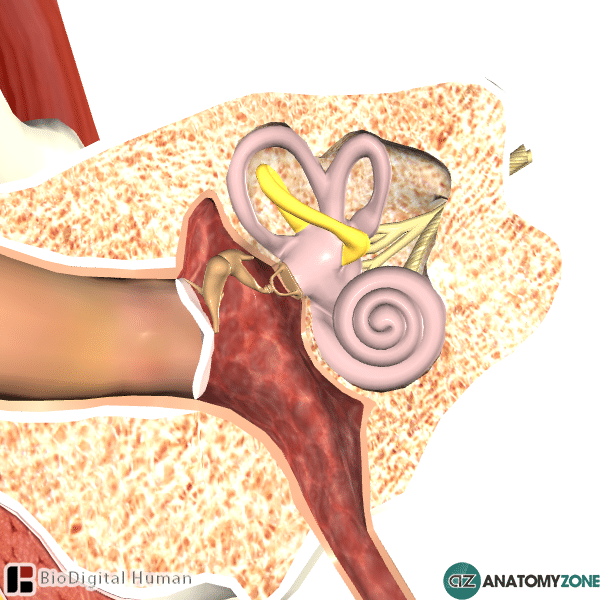Lateral Semicircular Canal

The structure highlighted is the lateral semicircular canal.
The ear consists of three anatomical components:
- External ear
- Middle ear
- Internal ear
The internal ear consists of the bony labyrinth and the membranous labyrinth. The semicular canals are a component of the bony labyrinth, which consists also of the vestibule and the cochlea. These bony components contain a clear fluid known as perilymph.
There are three semicircular canals:
- Anterior (superior) semicircular canal
- Posterior semicircular canal
- Lateral (horizontal) semicircular canal
Each semicircular canal attaches to the vestibule and has one end that is enlarged to form the ampulla. The semicircular canals are oriented at right angles to each other – these different orientations allow for individual canals to be stimulated according to rotation and movement of the head in different planes.
The lateral semicircular canal is the shortest of the canals and is responsible for conveying rotational motion of the head around the vertical axis. This is the movement that is produced if, when sitting upright, you were to move your head from left to right, and vice versa.